Fashion
Global Warming is Coming For Our Beauty Bags
Published
3 years agoon
By
Terry Power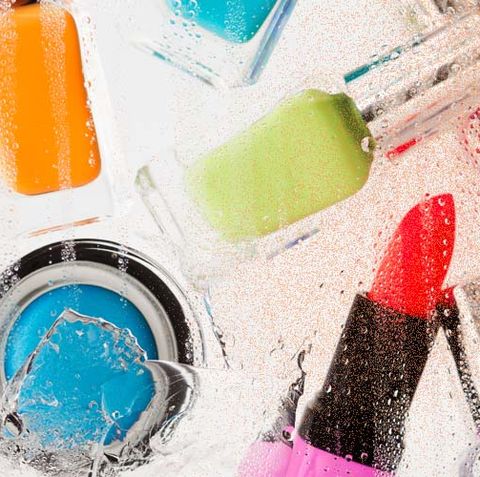
When Nancy Gagnon, a formulator at the Designer Beauty Lab in Santa Ana, California, ventured out into a summer heat wave wearing a full face of makeup, the final look wasn’t quite what she was going for: “Half of my brows melted off, leaving me looking like some character from a sci-fi movie,” she recalls.
Carrying out real-world tests of cosmetics from competitor brands like this is a key part of product research for Gagnon. It’s not the only time she has come across makeup that is no match for the hot spells which regularly scorch her city—and she’s not alone.
As extreme climate events sweep the globe, melting makeup, evaporating eau de cologne, and stylers that liquefy in sunlight have become commonplace. Many of our products just aren’t built for the record temperatures we’ve seen this summer and last summer, this winter, and the winter before. But with sweltering heat forecasts to make frequent future appearances, how will brands adapt?
At Antrim Cosmetic Solutions in Toronto—a city which broke its own heat record in June— chemist Anjali Hardikar has first noticed changes in consumer habits.
“People are leaning towards products like sheet masks and hydrating mists which provide moisture and nourishment, along with cooling relief to the skin in heat,” she says. “Paper soaps and shampoo or soap bars are also well-accepted as they are not affected by heat.” And while these sturdier products should see us through the heatwaves to come, other staples are a little more delicate. “Creams can break at higher temperatures, either because the water phase is lacking a water-binding agent like a polymer, or a suitable hydrocolloid, like xanthan gum,” Hardikar explains. “Or, the emulsifier type or amount is not enough to keep the cream together.”
Thanks to its complex blends of oils and UV filters, sunscreen, the ultimate hot weather staple, is extremely heat-sensitive. And even when our lotions and potions seem to be holding up, the actives inside them may not be. Naturally volatile essential oils can vaporize and oxidize easily, reducing beauty benefits and leaving fragrances unrecognizable. Hyaluronic acid starts to break down at around 99F, while just a day in 104-degree heat—11 degrees below the record-breaking temperatures that hit the Pacific northwest this summer—will dramatically degrade some peptides.
And if it’s so hot it seems like even your lipstick is sweating, it probably is: high temperatures often cause syneresis, where the liquid part of a product gets squeezed out, leaving sweat-like droplets on the surface.
So why are our products so susceptible to the weather? “Big corporations already test their products at elevated temperatures,” says Andreas Nievergelt, a pharmaceutical scientist and formulator. The problem is, in countries which aren’t usually that hot, those stability tests still assume a product will be stored at a room temperature of 68-75F. This is right—most of the time. But recent weather has made it seem less like the norm.
But in some places, extreme temperatures are the new normal. Gagnon, whose company often manufactures for overseas brands, already has to take this into account. “We’ve conducted projects with extreme climates or unique climate factors since day one,” she says, “It’s part of our basic R&D.”
Leah Romero
Formulators who create products for extreme weather often use extreme testing methods to ensure they go the distance: from incubators to simulate 122-degree heat, to hundred-mile car trips with products rattling around in the trunk. Their ingredients can differ too, often including extra, more powerful emulsifiers to help resist heat.
But manufacturers in regions which are new to extremes might be reluctant to change their formulas just yet: “If one adjusts a foundation to withstand or work at higher temperatures it will under-perform at lower, normal ones,” explains Andreas, adding, “These will still be the majority of the time.”
Luckily, some products are already adapted to extreme heat. “If I’m going to be in the high heat of the day, I’m going to use the longer wear formulas,” says Gagnon, who frequently works on this product type. “Some formulas in this same category, you could go swimming with them on.”
When it comes to moisturizer, gel creams are ideal, says Anjali, “they are very light and easily absorbed to provide a non-greasy skin feel in hot, humid climates.”
For your strands, conditioners formulated for tropical climes, like Brazil and the Dominican Republic, can make heatwave haircare a little easier.
But climate change doesn’t just affect what’s inside the jar; containers might need to adapt too. “The main problem is high temperatures and temperature changes,” Matteo Mariani, a packaging designer at the Milan-based MAIS Project tells me. “If the packaging is not designed for this, these two situations can seriously damage the integrity of the product. With plastics, “heat can change the stiffness, it can create cracks on the surface, it can change the color or the shape.”
In turn, heat-damaged packaging changes the amount of air inside the product, setting off all kinds of new chemical storms. “The solution is a sealed container,” says Andreas, though the extra cost might put off companies who don’t already seal.
For brands who do, ‘sealing’ can happen at a microscopic level too: encapsulating fragile ingredients protects them from higher temperatures in the packaging, says Anjali. “Customers get the full benefit of the actives when the product is applied to the skin.”
Meanwhile, climate change isn’t just making us hotter. The rise in global temperature produces all kinds of erratic weather. This year has seen devastating hurricanes, cyclones, wildfires, and flooding which climate scientists have quantitatively linked to warming.
Droughts are yet another consequence already impacting the beauty industry, leaving many brands looking to decrease their water footprint, to ease the pressure on freshwater supplies brought low by climate change, pollution, and overuse.
“Being in California, which is having a water crisis, I have fallen in love with multi‐functional products,” Gagnon says. “For instance, I use a 3-in-1, rinse‐free, micellar formula that was designed to not need a sink.” Water-free products like dry shampoos and conditioning bars are becoming more commonplace, too, with some brands opting for face masks in tablet-form, which also prevents their products from drying out in hot weather. And where H2O can’t be eliminated, ingredient manufacturers have come up with a tantalizing solution: algae-based waters. Internally filtered by the algae themselves, the water is usually a marine industry waste product but can be used to replace freshwater in cosmetics.
Still, adapting our products to resist heat and handle water scarcity isn’t enough. Climate change isn’t only affecting our haircare and skincare products, it’s also changing our hair and skin.
Vijay Limaye is an environmental epidemiologist who investigates the health consequences of our rapidly-changing climate. He’s already seen how climate change can tangle with the pollution that causes it, compounding the negative effects.
“Fossil fuels are enormously polluting to the climate and they also degrade air quality,” he says. “Toxic dust can be unleashed into the environment through wildfires and powerful storms, often triggered by climate change.”
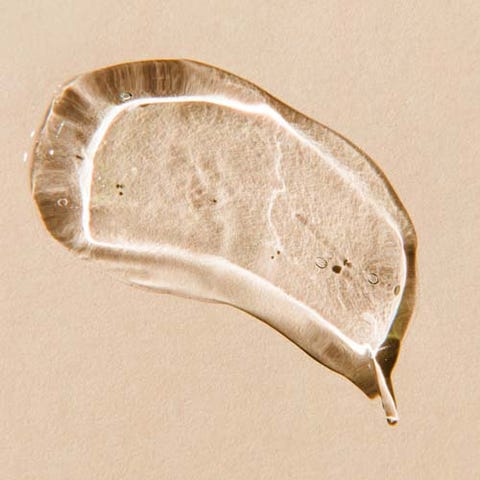
Leah Romero
That dust frequently contains particle pollutants, which break hair and breach the skin barrier. Extreme heat can push up ozone levels, multiplying free radicals which damage cells and have long been linked to wrinkles, premature greys, and hair loss. Demand for anti-pollution skincare and haircare products is already here, but the effects go much deeper: Vijay’s research also reveals links between climate change, chronic disease and shorter lifespans.
This is why adapting to climate change and building resilience will only take us so far. We have to address the root causes, too.
Like others, the beauty industry relies heavily on fossil fuels. They’re used to source cosmetic ingredients, run plants, transport goods, and also to create a staggering amount of plastic packaging every year. Researching emission-reducing alternatives, the MAIS team discovered several plant-based materials with better technical characteristics than plastic. “We have all the right cards to deal with this overheating,” Matteo says, “but what if we take sustainability into account? The product is there, the technology is there, but the price is different, and when it comes to packaging, it becomes a main driver.”
At least some major players are listening. Beiersdorfer, the makers of Nivea, are the latest to announce renewable packaging, with a pledge to go completely carbon-neutral by 2030.
Still, Andreas cautions against being lulled into a green comfort zone. “Big corporations know how to calculate or green-wash their carbon footprint,” he says. “We have to change our attitude and simply produce, use and waste less.”

Leah Romero
Vijay agrees: “It’s great if consumers choose green beauty products over less sustainable options,” he says. “It’s also wise to stop and pause before making purchases to remember that all sorts of elements of the product chain, from manufacturing to water use to transportation, distribution and disposal can have adverse environmental impacts.”
So when can we expect climate-resilient, sustainable beauty products to be de rigueur? Maybe not just yet.
“Mean temperature is ‘only’ rising by a degree or two,” Andreas notes. “Even a few heat peaks in between won’t change that. While local hotspots may develop, and the extreme weather events we saw this year can happen again, I don’t think that the cosmetic industry will do something in the near future. The cost for change is likely higher than living with some losses now and then.”
Gagnon is more optimistic: “You have some incredible professionals in this industry who have big hearts, [who] do what they do to be a change in the industry and remain dynamic, versus making the same, dated formulas for the past 30 years.” But, she admits, “change doesn’t occur overnight.”
This content is created and maintained by a third party, and imported onto this page to help users provide their email addresses. You may be able to find more information about this and similar content at piano.io
You may like
-


How common chemicals could help clean up global shipping
-
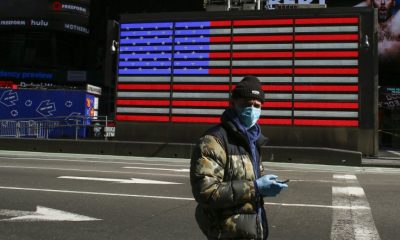

WHO Admits COVID-19 Still A Global Threat Despite Announcing The End Of Pandemic
-


A Cambridge Analytica-style scandal for AI is coming
-


OpenAI’s hunger for data is coming back to bite it
-
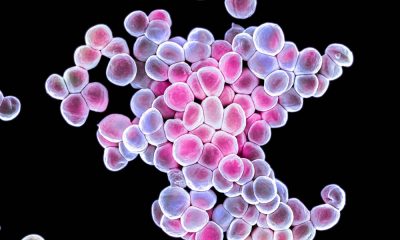

Bacteria can be engineered to fight cancer in mice. Human trials are coming.
-


Mpox Could Resurge In Coming Months, CDC Warns
Fashion
Jennifer Lopez Joined Ben Affleck In L.A. With Kids For Thanksgiving
Published
3 years agoon
26 November 2021By
Terry Power
On Wednesday night, Jennifer Lopez arrived in Los Angeles with her 13-year-old twins Max and Emme. The family was likely there to join Lopez’s boyfriend, Ben Affleck, for the Thanksgiving holiday. Lopez recently returned from the much colder climate of British Columbia, Canada, where she was filming her latest project, The Mother.
J. Lo touched down in her private jet wearing a teddy fur coat from Coach’s Autumn/Winter 2019 collection, and a pair of Ugg boots. Classic airplane outfit, celebrity style. Lopez and Affleck originally dated in 2002 and broke up in 2004. Their romance was rekindled earlier this year, soon after Lopez ended her relationship with baseball player Alex Rodriguez. The new couple went official in July, while celebrating Lopez’s 52nd birthday abroad.
Affleck’s most recent relationship with Ana de Armas ended in January after about a year together. He had divorced ex-wife Jennifer Garner in 2015 after being married for almost a decade. Garner and Affleck had three daughters, Violet, Seraphina, and Sam.
Before traveling back to the U.S., Lopez posted a story to Instagram Reels about how grateful she was to be headed home.
“Hey everybody, it’s my last day here shooting on The Mother out in Smithers in the snow, it’s been beautiful, but tonight I’m on my way home,” she said, as she walked through the wild landscape in a black coat and beanie.
“I’m so excited for Thanksgiving! I hope everybody has an amazing weekend with their families and their loved ones, there’s so much to be grateful for this year. I’m on my way!”
This is the first major holiday of the year since Lopez and Affleck reunited, so it’s likely to be a big one for both families.
This content is created and maintained by a third party, and imported onto this page to help users provide their email addresses. You may be able to find more information about this and similar content at piano.io
Fashion
Everlane’s Black Friday Sale is Packed With Winter Essentials
Published
3 years agoon
26 November 2021By
Terry Power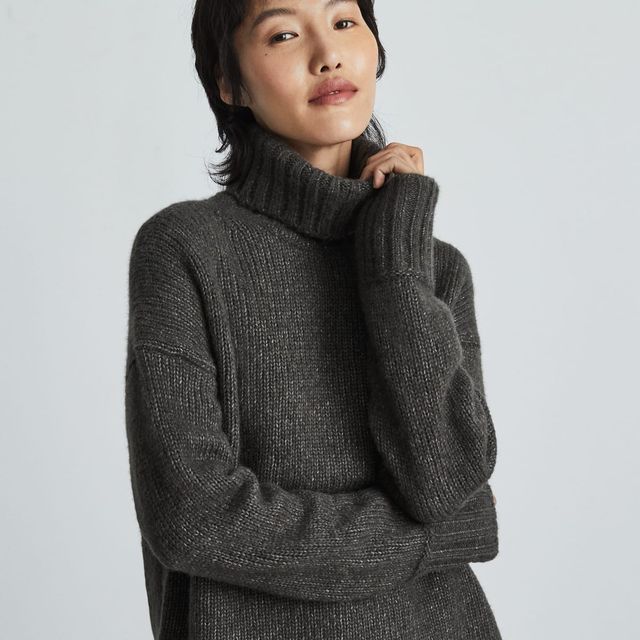
Courtesy
This is not a drill: Everlane just kicked off its Black Friday sale. Now through Monday, November 29, the direct-to-consumer brand is offering 20 to 40% off its cozy sweaters, minimalist activewear, and popular jeans. If you’re not super familiar with Everlane, let me spell it out for you: this is a big deal.
The e-tailer might be known for making sustainable, ethically made clothes and accessories at a fair, affordable price, but Everlane rarely has sales beyond its Choose What You Pay section. So, if you want to stock up on cute basics for less, now’s your time to shop.
And, in true Everlane fashion, the brand is taking this opportunity to give back. Everlane is partnering with Rodale Institute and help U.S. farmers transition their farmland to regenerative organic—and donating $15 per order to the cause. A great sale that gives back? I’m sold.
But, hurry! These deals are going to sell out fast, so you won’t want to waste any time filling your e-cart.
Advertisement – Continue Reading Below
1
The Cloud Turtleneck
$150 $105 (30% off)
Sweater weather is officially here, so why not pick up a few fresh layers? This turtleneck is the S’s: snuggly, stylish, and on sale.
2
The Authentic Stretch High-Rise Skinny Jeans
everlane
$78 $58 (25% off)
Looking for a great pair of jeans, minus the markup? Everlane’s classic skinny style is not only super stretchy, but it’ll look good with everything from chunky sweaters to silky blouses.
3
The ReNew Teddy Slippers
everlane
$65 $39 (40% off)
Why limit the shearling trend to the upper half of your body? These plush slippers will give even your most worn-in sweats a stylish edge.
4
The Chunky Cardigan
everlane
$110 $77 (30% off)
Sure, this may not be the cardigan Taylor Swift was talking about. But, with an exaggerated collar and ribbed finish, this style would definitely score top marks from the singer herself.
5
The Canvas Utility Boots
everlane
$115 $59 (40% off)
Brave the cold weather in style with Everlane’s chic boots. The canvas uppers and thick sole make these an ideal, all-weather option.
6
The Lofty-Knit Henley
everlane
$150 $105 (30% off)
Made with a nubby blend of merino wool, alpaca, and recycled nylon, this henley is perfect for a cozy night in, yet stylish enough to wear in public.
7
The Perform Bike Shorts
everlane
$45 $22 (51% off)
No, you can never have too many stretchy pants. Everlane’s bike shorts ooze major Lady Di vibes — for under $25, no less.
8
The ReLeather Court Sneakers
everlane
$110 $66 (40% off)
Made with recycled leather, these refresh sneakers will serve up major curb appeal — and Mother Nature’s seal of approval.
9
The Field Dress
everlane
$100 $60 (40% off)
Found: a fun, flouncy frock you can wear year-round. For a wintry take, pair with opaque tights and your favorite chunky boots.
10
The Cozy-Stretch Wide-Leg Sweatpants
everlane
$150 $75 (50% off)
With a straight-legged silhouette and wool material, it’s safe to say these are the chicest sweatpants we’ve ever seen. To sweeten an already enticing offer, this pair is half off.
11
The Organic Cotton Flannel Popover
$80 $56 (30% off)
Everlane reimagined the traditional flannel with a cropped silhouette, voluminous sleeves, and a slew of minimalist colors.
12
The Studio Bag
everlane
$275 $192 (30% off)
Large enough to fit all your essentials, but not too big that it’ll weigh you down, Everlane’s Studio Bag is the perfect everyday purse.
13
The ReNew Long Liner
everlane
$158 $118 (25% off)
House Stark was right: winter really is coming. Made with recycled materials, this liner is a great layering piece that’s considerably chicer than the yesteryear’s Michelin Man-worthy parkas.
14
The Felted Merino Beanie
everlane
$50 $30 (40% off)
All set on clothes? Pick up this cheery beanie, which is 40% off its original price.
Kelsey Mulvey is a freelance lifestyle journalist, who covers shopping and deals for Marie Claire, Women’s Health, and Men’s Health, among others.
This content is created and maintained by a third party, and imported onto this page to help users provide their email addresses. You may be able to find more information about this and similar content at piano.io
Advertisement – Continue Reading Below
Fashion
29 Winter Fragrances That Exude Main Character Energy
Published
3 years agoon
26 November 2021By
Terry Power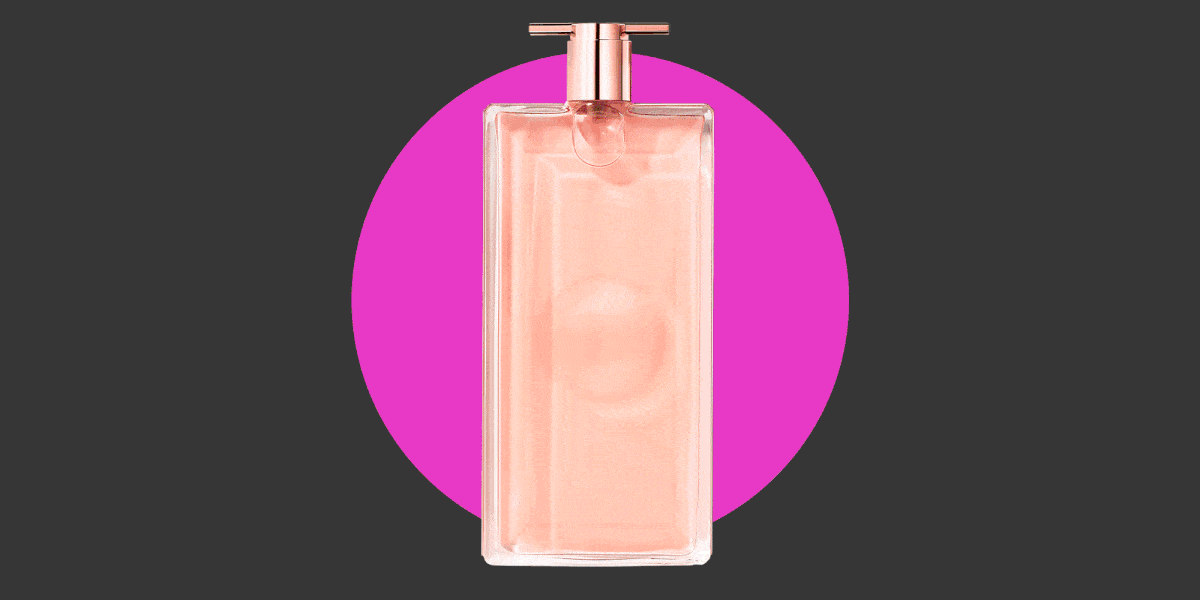
29 Winter Fragrances That Exude Main Character Energy
